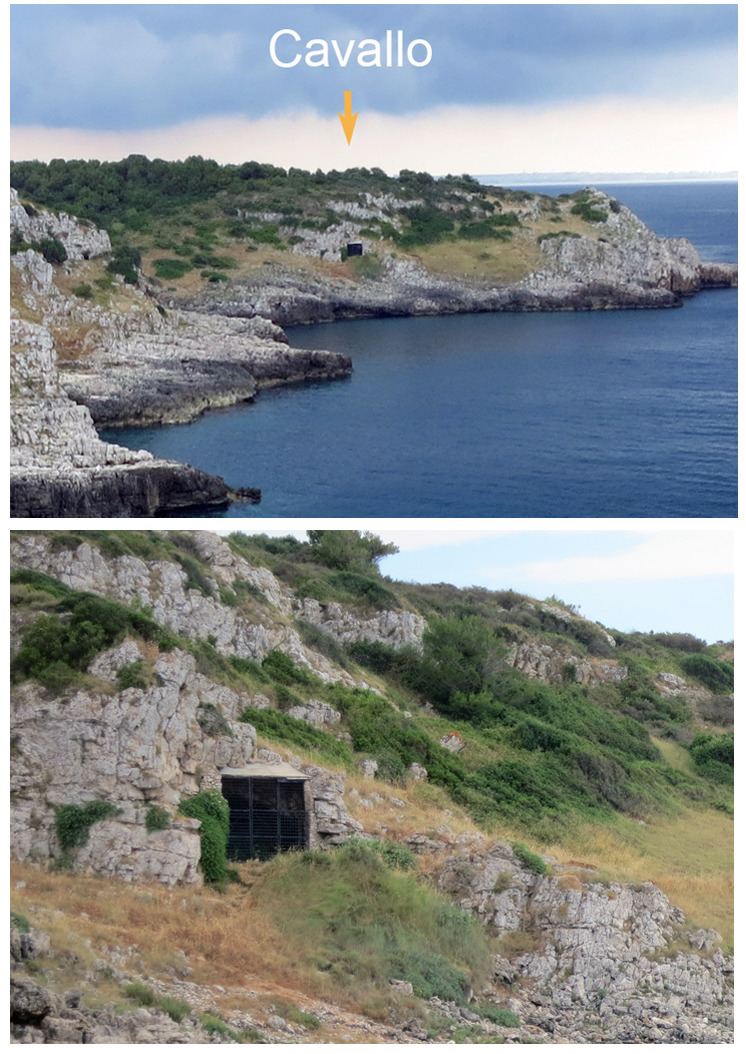Phone +39 0833 836928 | Province Province of Lecce Geology Limestone | |
 | ||
Address Santa Caterina, Nardò, SP286, 73048 Nardò LE, Italy | ||
Virtual tour grotta del cavallo a nard lecce
The Grotta del Cavallo or Cavallo Cave (Italian:"Cave of the Horse") is a limestone cave in the region of Apulia, Southern Italy, near Nardò 90 km (55.92 mi) south of Taranto. The cave is about 15 m (49 ft) above present sea level. It has a rounded entrance, 5 m (16.40 ft) wide and 2.5 m (8.20 ft) high opening toward the sea. The cave was rediscovered in 1960 and two waves of excavations ensued. The first wave spanning from 1963 to 1966 and the second from 1986 to 2008. The cave was disturbed by looters during the period between the two waves of excavations, damaging the layers corresponding to the Upper Palaeolithic, because of this, the cave entrance is covered by a gate and is not open to the public.
Contents
La grotta del cavallo
Stratigraphy
The cave contains a rich stratigraphic succession wit a depth of 7 m (23 ft), that is deposited on top of an interglacial beach foundation. The most notable section of this sequence covers the Middle Palaeolithic, associated with the Neanderthal Mousterian culture and a recently discovered subsequent strata that was associated with the earliest known appearance of Anatomically modern humans in Europe.
Discoveries
In 1964 two deciduous molars were discovered in the cave. In 1967 researchers described the teeth as to be of Neanderthal origin and assumed that the accompanying stone tools and shell bead ornaments were typical of a Neanderthal culture, that was subsequently termed the Uluzzi culture as it closely resembles the Châtelperronian. However, the association of the Châtelperronian culture with Homo neanderthalensis is subject of ongoing debate. In 2011, a team of researchers led by Stephano Benazzi of the Department of Anthropology at the University of Vienna published a study in the journal Nature which concluded that the teeth are not of Neanderthal origin, but from an early Homo sapiens and date from 45,000 to 43,000 years BP. According to Benazzi these results allow the support of the hypothesis that the Uluzzi culture is not to be attributed to Neanderthals but to modern humans. Although the Human provenance of these teeth are contended, no evidence contradicting this claim has been put forward and has gained some acceptance. However, the attribution of the entire Uluzzi technology to Anatomically Modern European Humans is more contentious.
